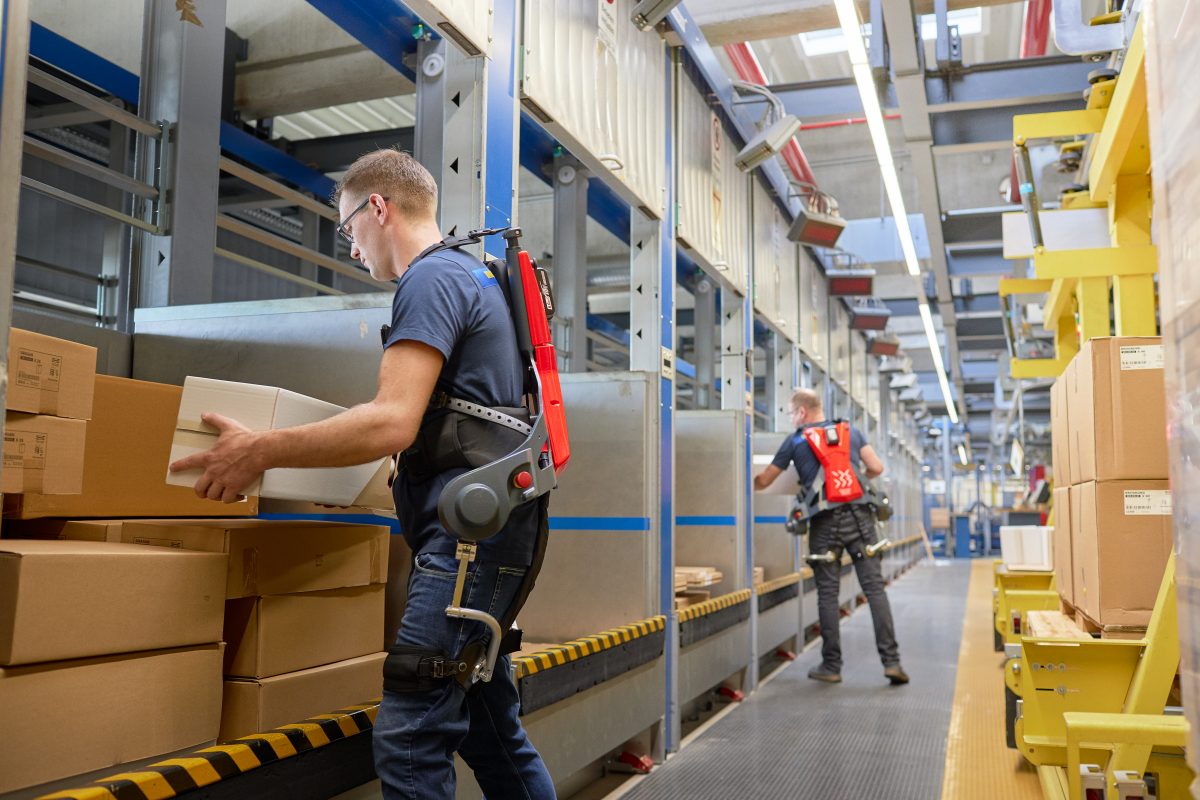At first, exoskeletons were almost exclusively interesting for the army; later civilians found their way to use them. In addition to the military ( to use on the battlefield), as well as a medical aid ( to help people who cannot move on their own), exoskeletons have found more and more opportunities in the field of construction and logistics. Exoskeletons support the transfer of loads in places where heavy equipment cannot be installed.
The list of manufacturers of this type of device is quite long, and other suppliers are also entering the “game”. When asked about prices, manufactures respond with silence. How much it costs will be known when it finds more extensive application than previously because it’s a test period for now. In real conditions, employees check whether and to what extent these devices reduce the load on the limbs and spine, which will affect their physical condition and health. Ultimately, exoskeletons are to “compete” with industrial robots.
In logistics, exoskeletons are useful for performing warehouse activities, loading and unloading goods, lifting and lowering loads, completing and decomposing.
They are available both as passive exoskeletons, supporting the employee only by mechanical means, cable systems or springs (they take loads as a kind of counterweight and transforming them into energy), and as active exoskeletons (they offer additional external support in the form of engines or systems pneumatic).
In both cases, the exoskeleton is a kind of “armour” that is either used to strengthen all muscle parts or only some of them (it can, for example, strengthen only the arm as a so-called artificial arm).
Exoskeletons in industry and warehouses
Koreans appreciated powered armour many years ago. Daewoo Shipbuilding and Marine Engineering equipped shipyard workers with exoskeletons, thanks to which they were able to manipulate loads weighing up to 30 kg freely. The Dutch logistics company Geodis had a similar goal, which opted for passive exoskeletons, and pickers who pick over 4 tons during their workday were equipped with the armour. A similar exoskeleton, tested in DHL in Germany, was created by Laevo.
The automotive sector generates considerable interest. BMW has implemented exoskeletons at its American plant in Spartanburg, and in a dozen Ford factories, a group of employees are already performing their tasks wearing them. These devices (without power, driven by human muscles) come from EksoVest. Scientists have calculated that a typical Ford factory worker raises his hands on an average of 4.6 thousand times a day, the exoskeleton is to take over part of this effort in the range of 2.3 to 7 kg. Audi also recently decided to start researching exoskeletons. The device weighs 3 kg and allows better distribution of lifted weights, and thus reduces back pain. The robotic exoskeleton, developed by the constructors of the Hyundai group, is an improved version of the device called H-LEX, designed for lifting very heavy objects. The supplier claims that with the help of this machine, users can lift objects weighing up to several hundred kilograms.
Another Korean company – LG – also presented the exoskeleton. The invention was called CLOi SuitBot. It was created in cooperation with the SG Robotics startup. The device supports the feet, legs and lumbar region, thus allowing a man not only to lift and carry heavier goods but also relieves his spine. CLOi SuitBot uses artificial intelligence technologies that continuously monitor not only the condition of the device but also the body (matching the device to the current operating conditions). If the system detects irregularities, it immediately turns off the exoskeleton and quickly informs its owner about it.
Exoskeletons of German Bionic were tested in several German DB Schenker warehouses (completing packages up to 15 kg). Cray X is based on a supporting structure mounted on the body of the warehouseman, which support his movements with the help of electromechanics (help for the muscles of the back and spine on the lumbar section). Warehouse workers equipped with exoskeletons took packages out of the shelves and placed them on pallets. Cray X tests were supervised by PhD students from the University of Dortmund.
45 kg will be lifted easily
Soon, the most advanced of all exoskeletons will be on the market. Guardian XO Max is prepared by Sarcos Robotics engineers. The exoskeleton will be powered by miniaturized batteries. There will be exchangeable cells that can be replaced with charged ones at any time. Thanks to their small size, the exchange can be quickly done on the spot. The power of the device is also essential. The creators of the exoskeleton ensure that when lifting a load of 45 kg, the operator will use as much force as if to lift 2.2 kg.
Work is also underway on the Talos exoskeleton, packed with modern technologies (unique material, communication systems, onboard computers, temperature regulators, sensors monitoring the user’s health, as well as devices that accelerate wound healing, own oxygen supplies). First, it will undoubtedly go to the army, but today it is said that in the future simpler versions of this type of device will be used in workplaces, e.g. in warehouses.
Photos: German Bionic











